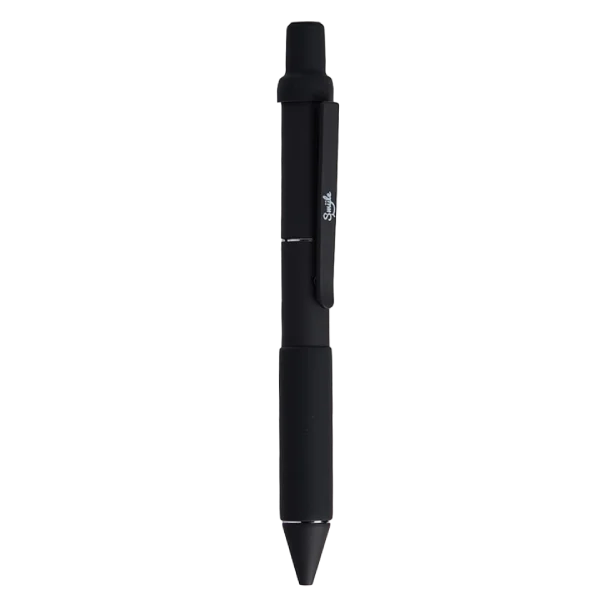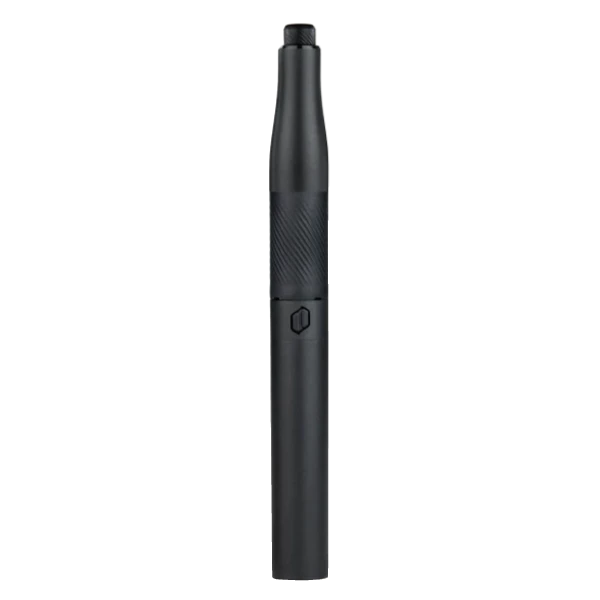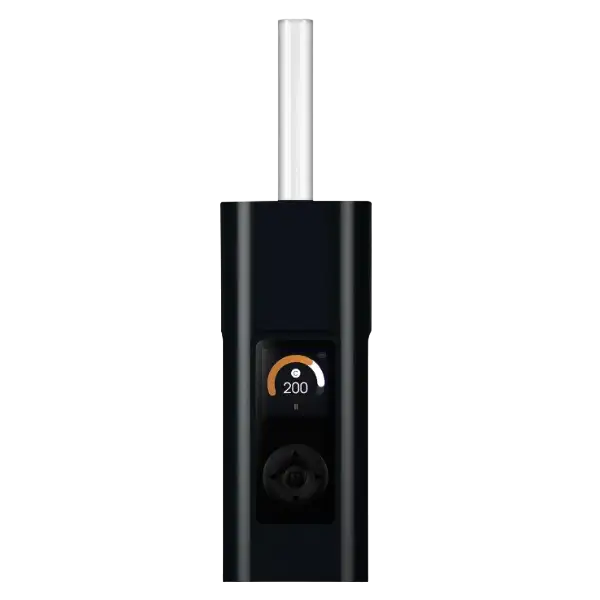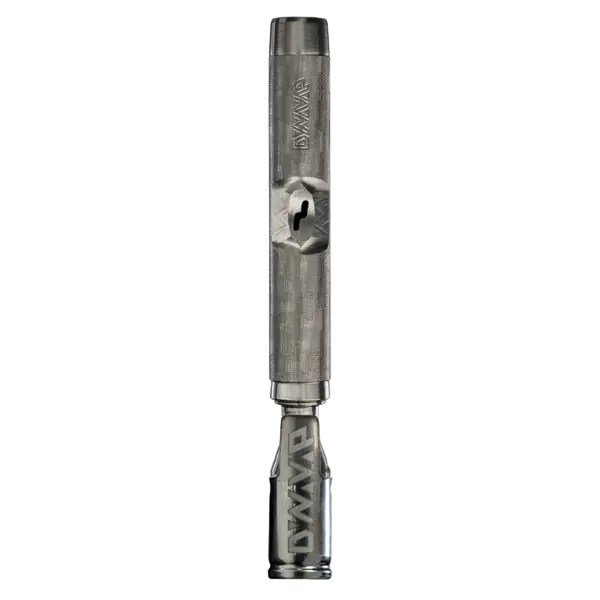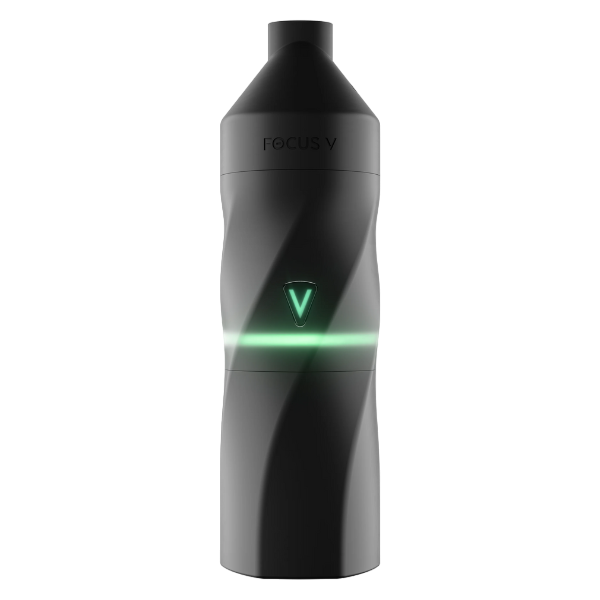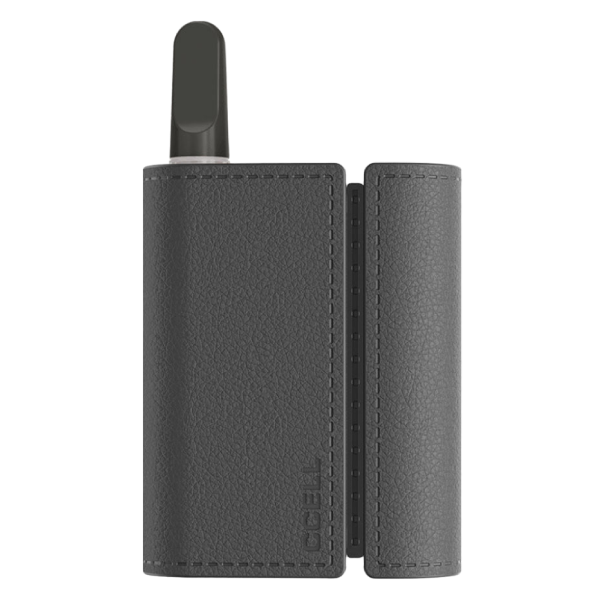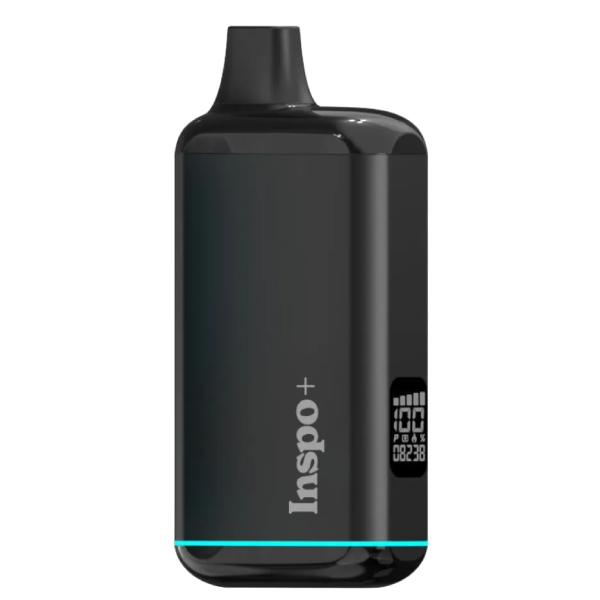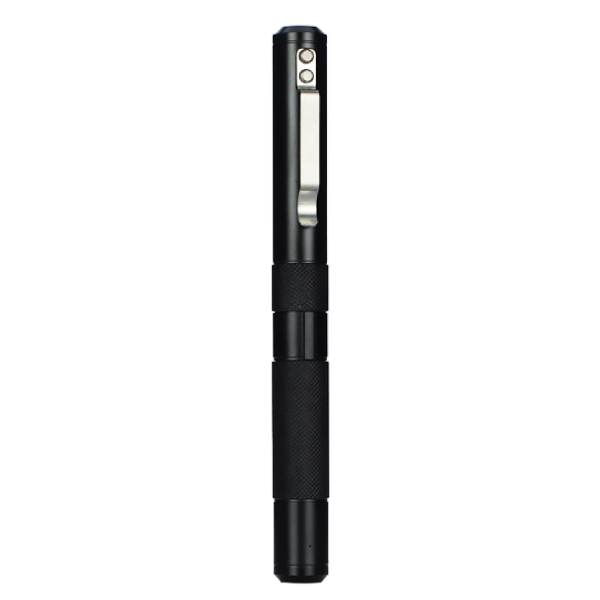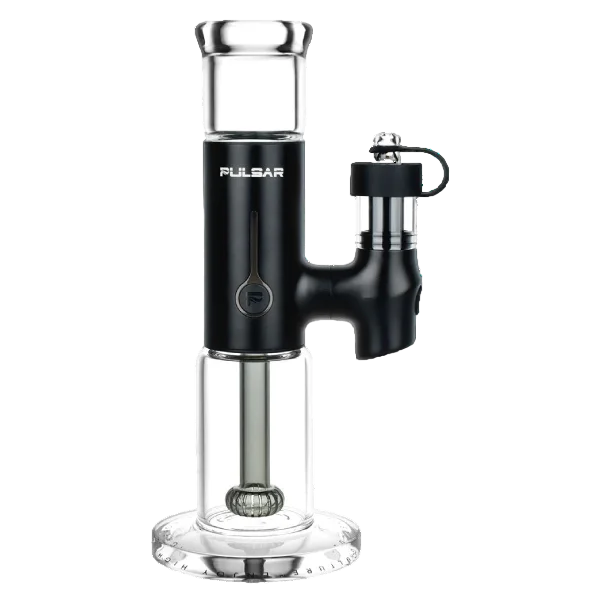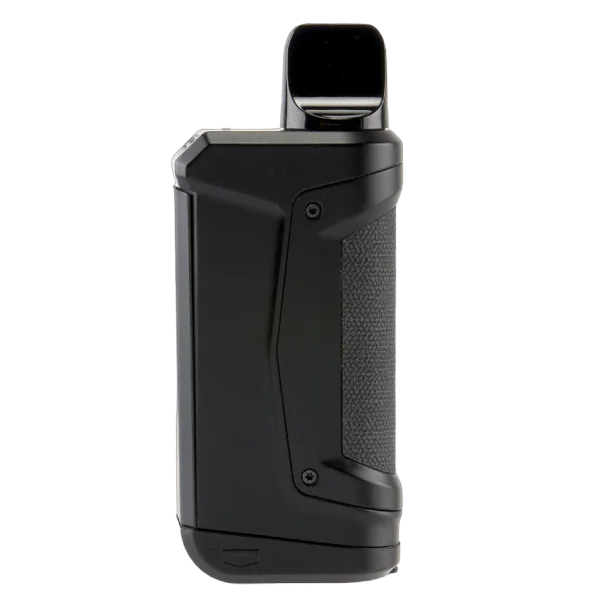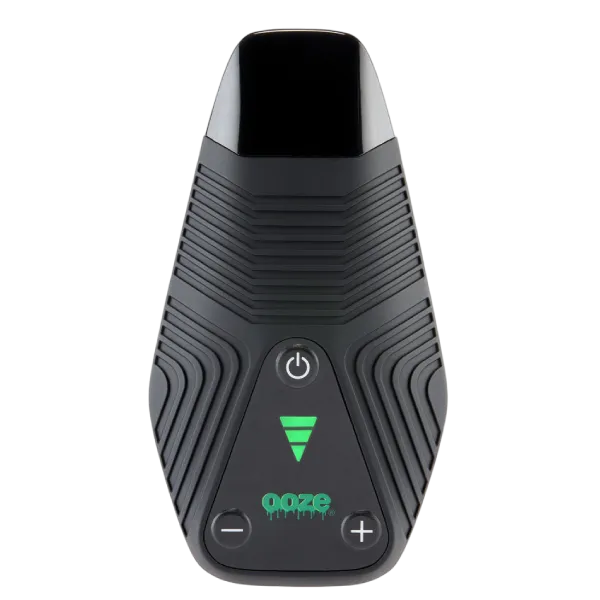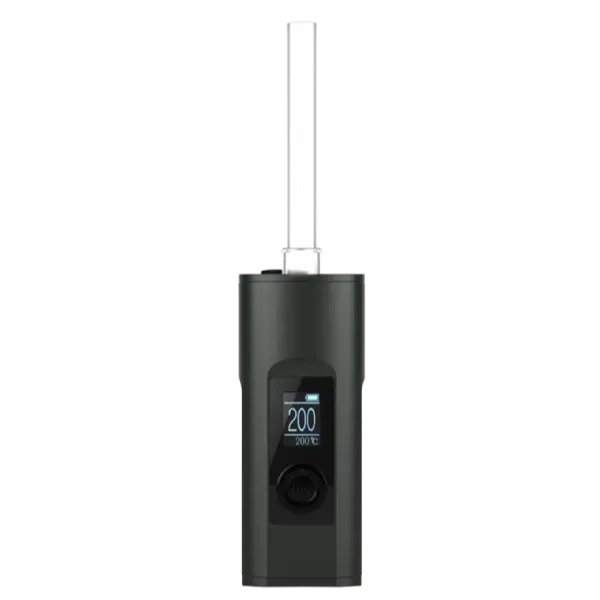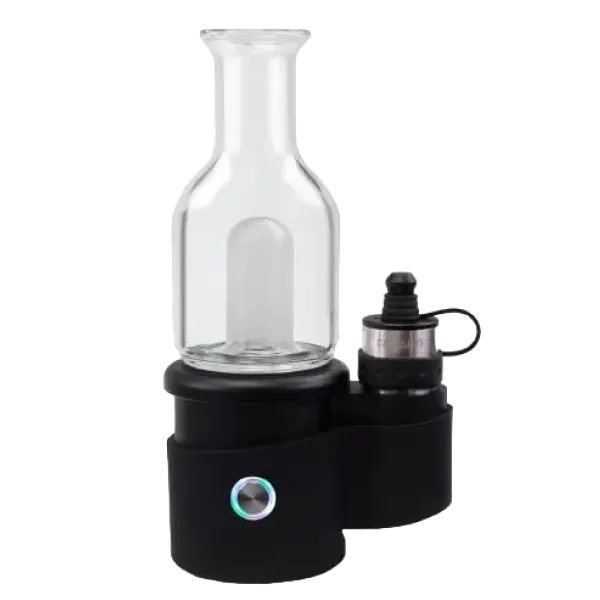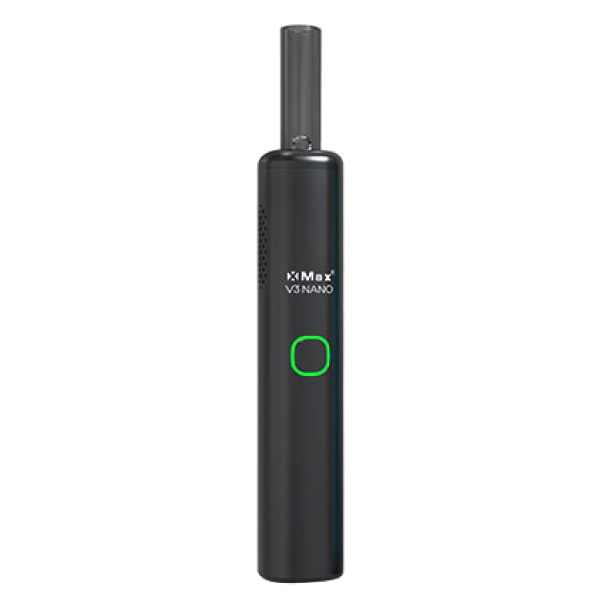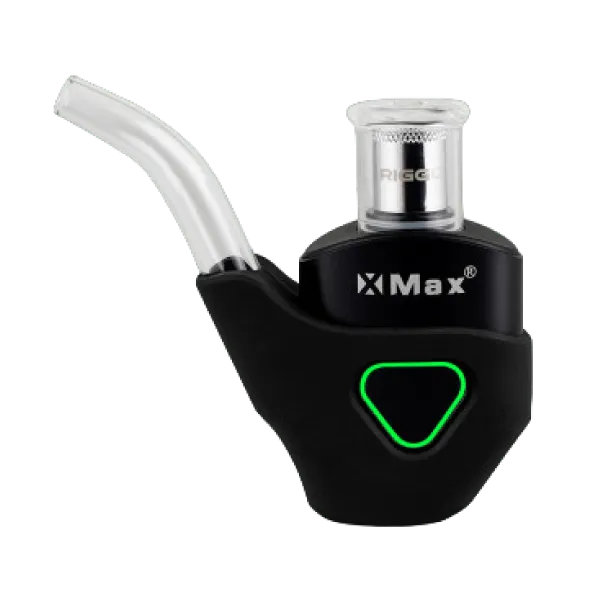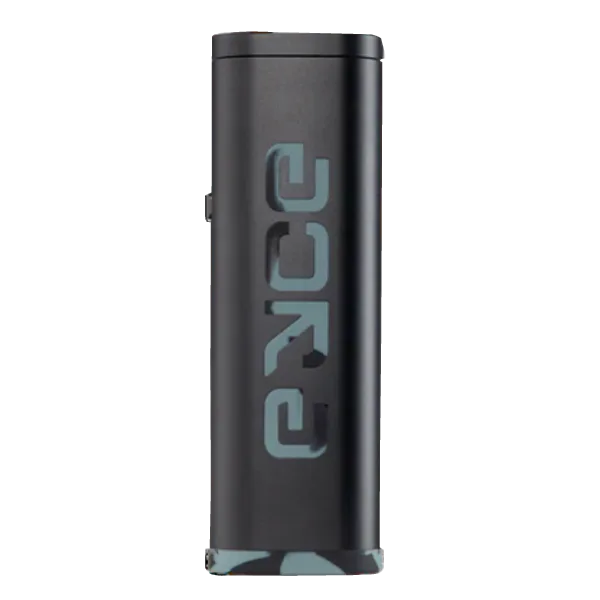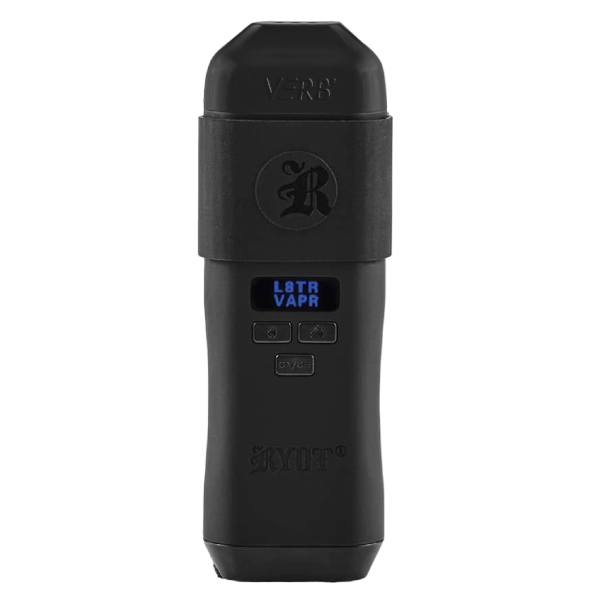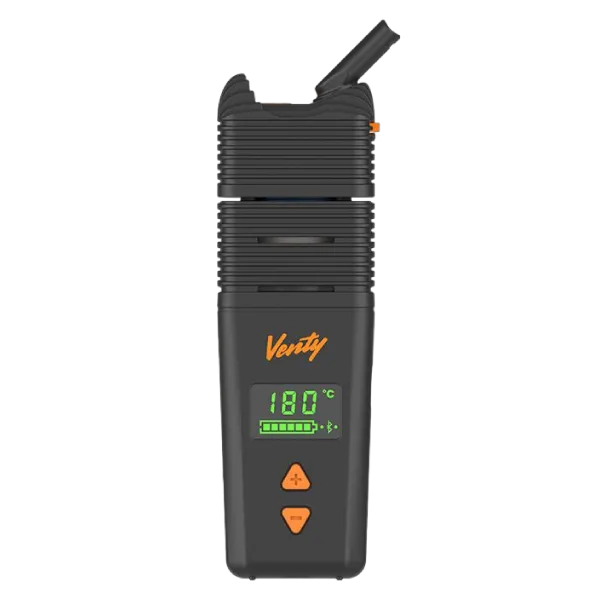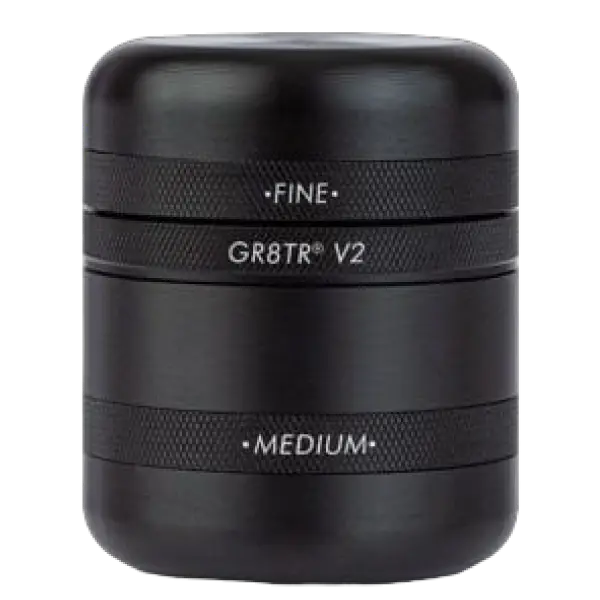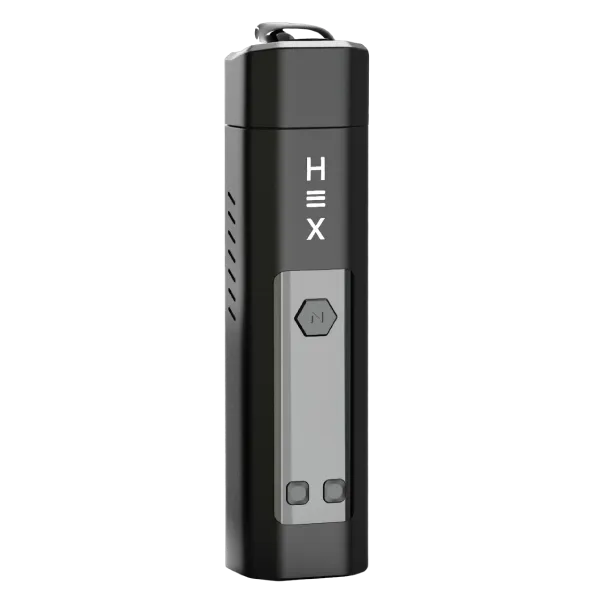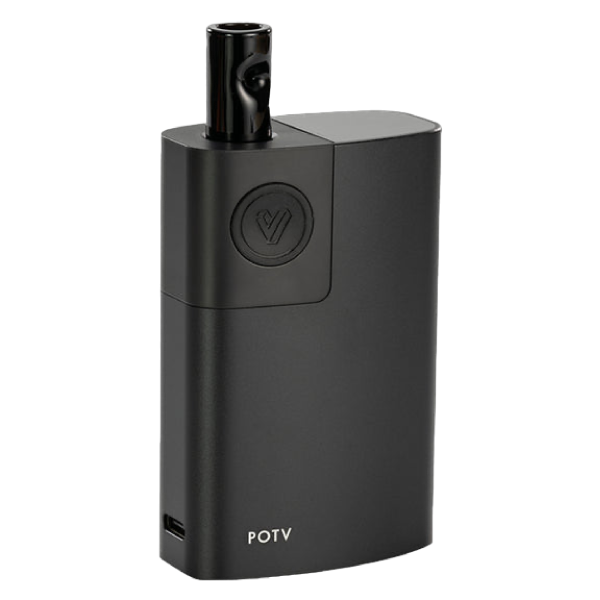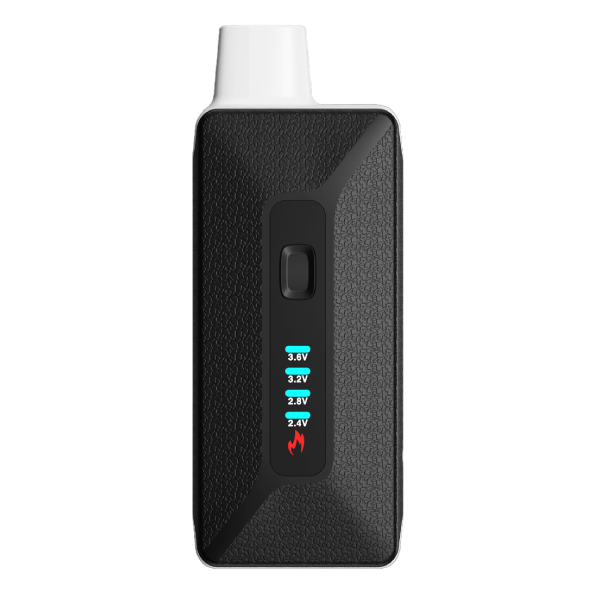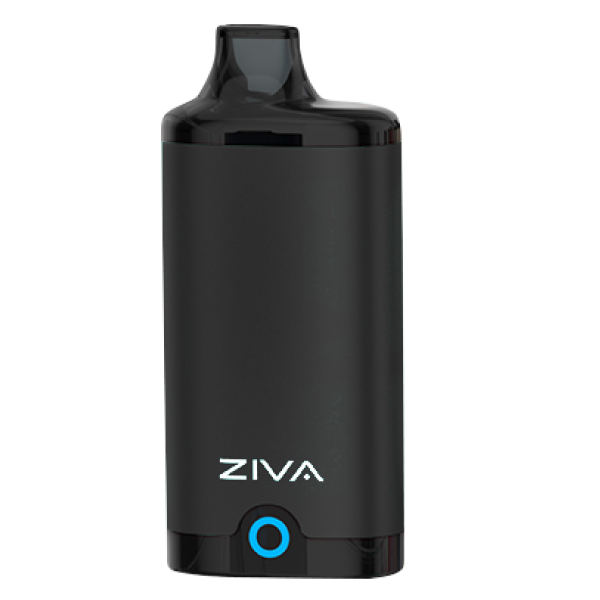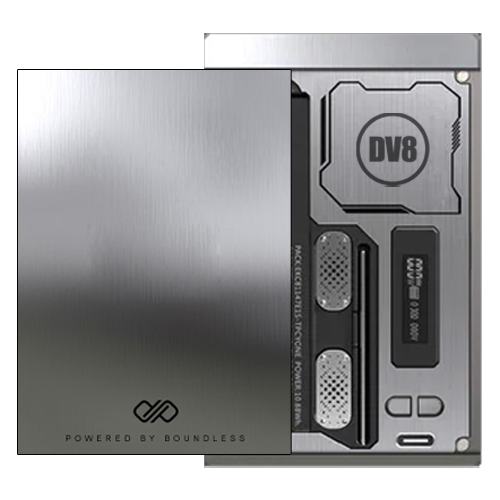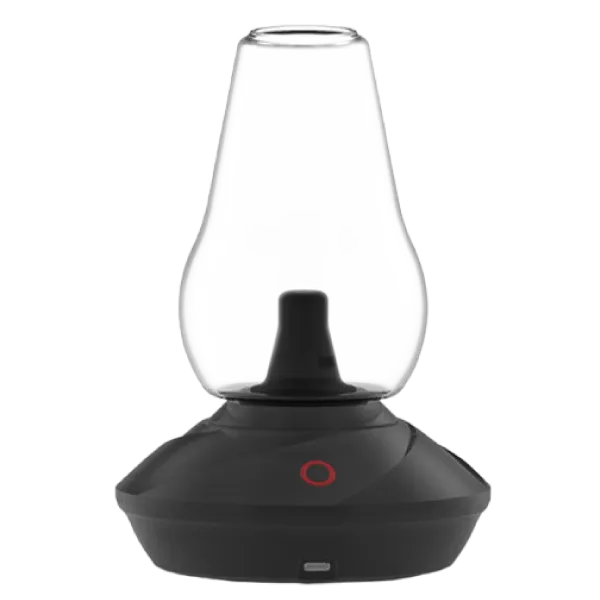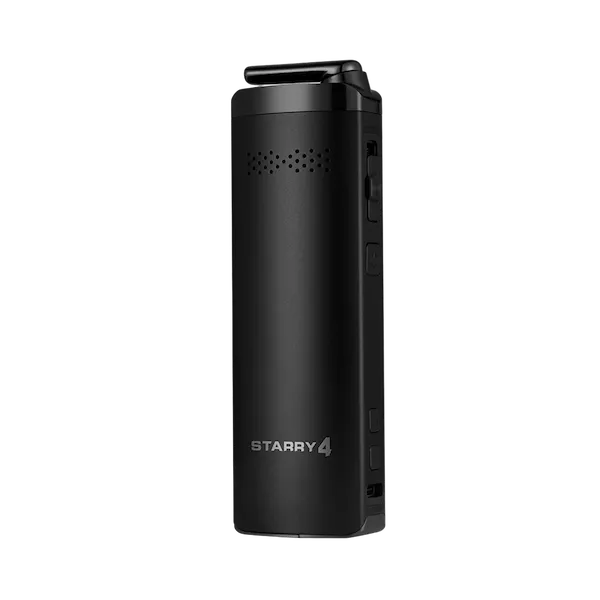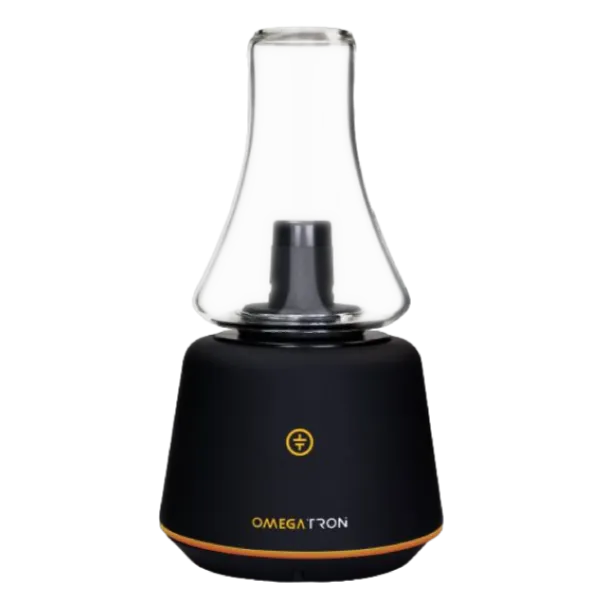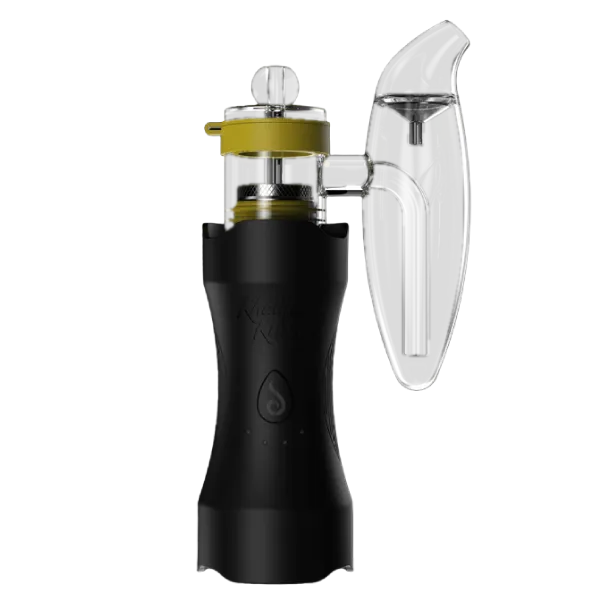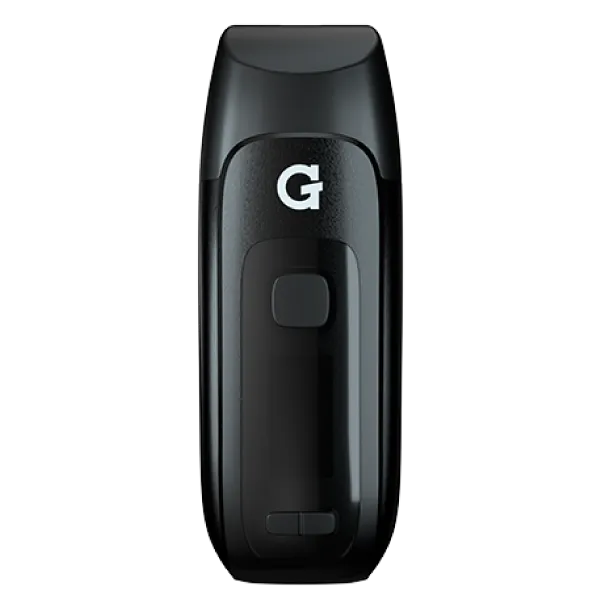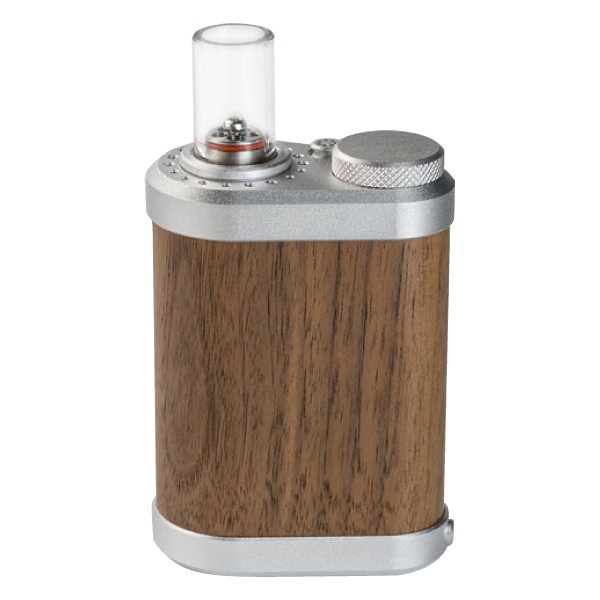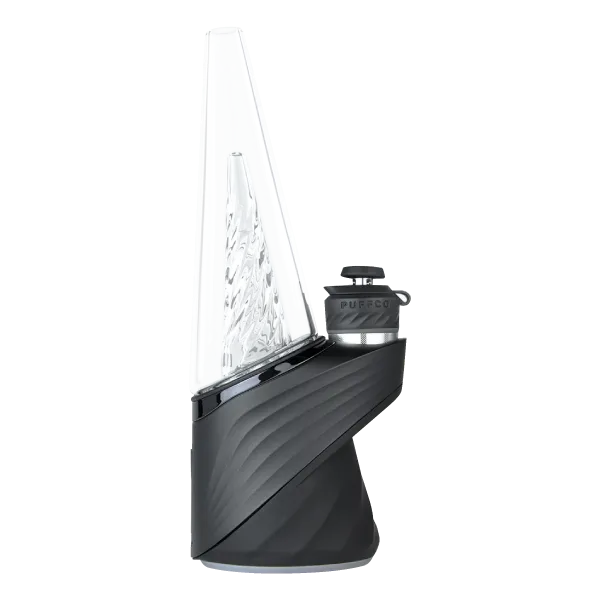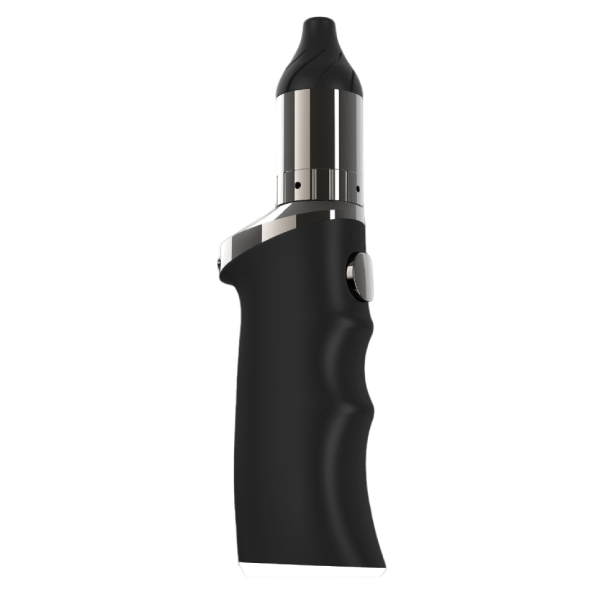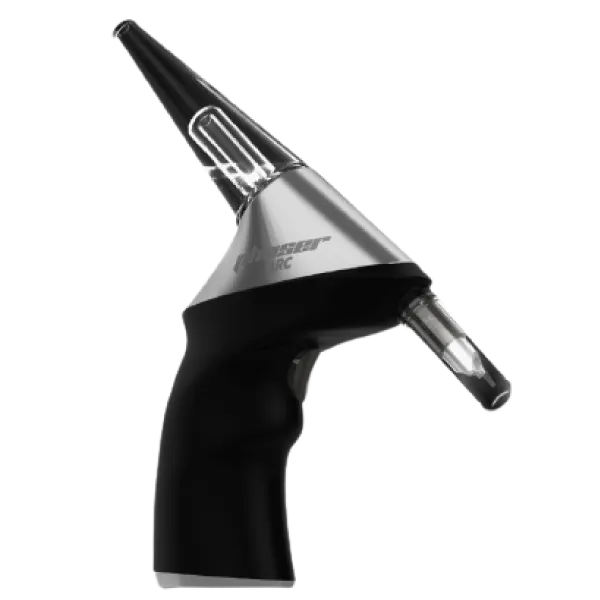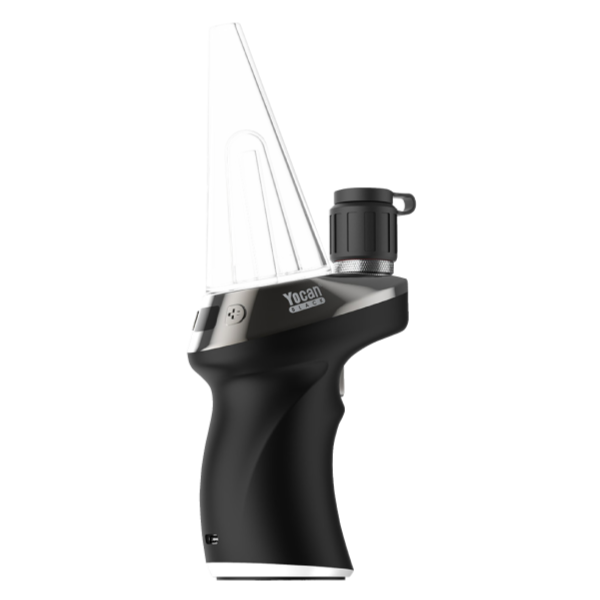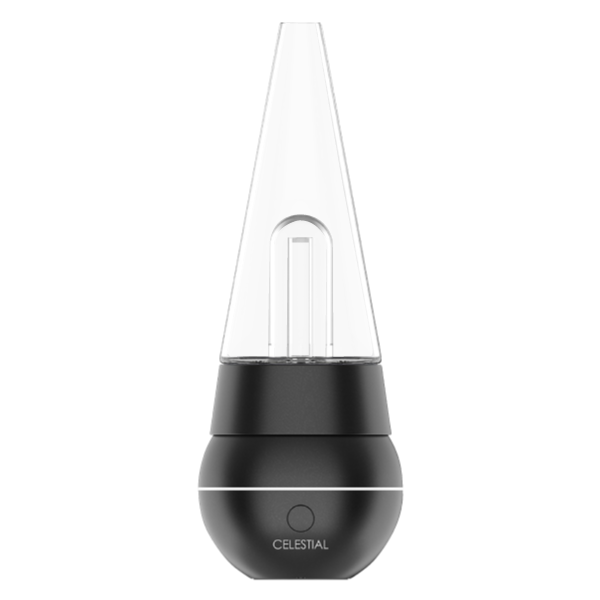What Are Weed Vaporizers?
Weed vaporizers are devices designed to heat cannabis products (dry herbs or concentrates) to a temperature that turns the active compounds (cannabinoids/terpenes) into vapor without combusting the material. This process of vaporization allows users to inhale cannabinoids like THC and CBD without many of the harmful byproducts associated with smoking.
A weed vaporizer works by heating the cannabis product to a temperature of around 350°F to 440°F (176°C to 227°C). This temperature range allows the active ingredients in cannabis to be released as vapor, without burning the plant material.
Weed vaporizers are available in different sizes and shapes, from portable vape pens to complex desktop models. The choice depends on the user’s lifestyle and preferences.
Regardless of their form, most vaporizers consist of a few key components:
- A battery or power source.
- A heating element.
- A chamber where the cannabis is loaded.
- A mouthpiece through which the vapor is inhaled.
Related: Best weed vaporizers of 2024
Types of Weed Vaporizers
Weed vaporizers can be categorized into two main types: Dry Herb Vaporizers and Concentrate Vaporizers. Each type has its own subcategories, catering to different preferences and usage styles.
Dry Herb Vaporizers
Flower vapes come in various designs, each with unique features:
Portable vs. Desktop:
- Portable Dry Herb Vaporizers: Compact, battery-powered devices designed for mobility and discretion. Ideal for on-the-go use, they fit easily in a pocket or purse.
- Desktop Dry Herb Vaporizers: Larger and more powerful but require a power outlet. They offer higher vapor quality and are typically used at home.
Conduction vs. Convection Heating:
- Conduction Vaporizers (aka session vapes): Heat the dry herb directly through physical contact with a heated surface (chamber walls). They are more common and are generally more affordable.
- Convection Vaporizers (aka on-demand vapes): Use hot air to heat the cannabis without direct contact. Convection heating is preferred by some users for its ability to produce consistent and flavorful vapor but often comes at a higher price point.
Related: Best dry herb vaporizers of 2024
Concentrate Vaporizers
Concentrate vapes are compatible with cannabis extracts (wax, dab, hash, rosin, etc) and can vary in shape and form:
Dab Pens:
Dab/wax Pens are slim “pen-shaped” vapes that are discreet, easy to use, and equipped with coils for thick, solid concentrates.
Related: Best dab pens of 2024
Electric Dab Rigs (eRigs):
eRigs are electronic versions of traditional dab rigs. They are less portable than dab pens but offer more powerful heating and advanced features. eRigs often provide precise temperature control and are ideal for users who seek high potency.
Related: Best eRigs of 2024
510 Batteries for Oil Cartridges:
These are simple, usually pen-style batteries designed to work with pre-filled THC or CBD oil cartridges. The term’ 510′ refers to the threading that connects the battery to the cartridge, a standard in the industry. These devices are the most portable and discreet weed vaporizers, making them a popular choice for those new to concentrate vaporization.
Related: Best 510 batteries of 2024
How Do Weed Vaporizers Work?
Weed vaporizers work by accurately heating cannabis to the boiling points of cannabinoids and terpenes, causing them to aerosolize without combusting the plant material. This process allows for a cleaner, more controlled inhalation of the active ingredients, maximizing efficacy and flavor while minimizing harmful byproducts.
Temperature and Boiling Points:
- THC vaporizes at around 157°C (315°F), and CBD at around 320-356°F (160-180°C). Controlling the temperature allows for the release of these compounds without reaching combustion, which occurs at about 450°F (232°C) and produces smoke.
- This temperature control is also crucial for terpenes, the compounds responsible for the plant’s flavors and aromas. Terpenes have lower boiling points than cannabinoids and can be effectively extracted at lower temperatures.
Aerosolization and Molecular Changes:
- In the vaporization process, active compounds like THC and CBD transition from solid (dry herbs) or liquid (concentrates) to a gaseous state, known as sublimation in solids and vaporization in liquids. This process detaches the cannabinoids and terpenes from the plant material.
- The resulting gaseous compounds then mix with air to create an aerosol – a mixture of air and vapor particles inhaled through the vaporizer’s mouthpiece. This method ensures the inhalation of cannabinoids in a purer form, as a physical change occurs where the structure of these compounds remains intact, unlike in smoking, where combustion leads to harmful byproducts.
Vaping vs. Smoking weed
Weed vaporizers offer a healthier, more efficient, and discreet way of consuming cannabis, with added benefits such as rapid THC delivery, enhanced flavor, and consistent effects. These features make vaporizers an appealing option for both recreational and medicinal cannabis users.
Healthier Alternative to Smoking:
Using vaporizers significantly reduces the inhalation of harmful byproducts like tar and carcinogens that are typically released during combustion in smoking (source: PubMed). It’s a cleaner, less harmful way to consume cannabis, potentially reducing respiratory issues associated with smoking.
Consistent and Predictable Effects:
Vaporizers offer accurate temperature control, allowing users to regulate their experience. By adjusting the temperature, one can control the release of specific cannabinoids and terpenes, leading to more consistent and predictable effects. This is particularly beneficial for medicinal users who require precise dosages.
Discreetness and Indoor Use:
Vaporizers produce less odor and visible smoke compared to traditional smoking. The smell and vapor dissipate quickly, making them more discreet and suitable for use in various settings, including indoors.
Rapid Delivery of THC:
Vaporization offers a quick onset of effects, as the inhaled vapor delivers cannabinoids like THC directly to the bloodstream via the lungs. This rapid delivery often results in a more intense and immediate high compared to smoking, where some THC is lost in the process of combustion (source: Hopkins Medicine).
Enhanced Flavor:
By avoiding combustion, vaporizers preserve the terpenes and other flavor compounds in cannabis. This results in a purer, more pronounced flavor profile, allowing users to fully experience the distinct tastes and aromas of each cannabis strain.
Cost Savings:
Vaporizers are generally more efficient in extracting cannabinoids and terpenes from cannabis compared to smoking. This means that less cannabis is required to achieve the desired effect, potentially leading to cost savings over time.
Portability and Convenience:
Many vaporizers are designed for portability and ease of use, with features like rechargeable batteries and user-friendly interfaces. This makes them convenient for users who are on the go or prefer a hassle-free experience.
Legal and Safety Considerations
Using weed vaporizers responsibly involves adhering to legal guidelines and practicing safety measures. Here are some key points to consider:
- Adherence to Local Laws: It’s imperative to understand and comply with the cannabis laws specific to your region. These laws can vary significantly, from complete prohibition to regulated medicinal and recreational use. Only purchase cannabis products from licensed dispensaries, as they adhere to safety and quality regulations. Unregulated products may contain harmful additives or incorrect labeling, posing health risks.
- Battery Safety: Many vaporizers are powered by lithium-ion batteries. It’s important to handle these batteries with care to prevent accidents (EPA Guidelines). Always use the charger provided with your vaporizer, and avoid exposing your vaporizer to extreme temperatures. If you notice any swelling or damage to the battery, discontinue use immediately and consult the manufacturer for advice.
- Avoiding Hot Parts: During and after use, certain parts of the vaporizer, particularly around the heating element, can become very hot. Be cautious and avoid direct contact with these parts to prevent burns. Always give your device time to cool down before handling or cleaning it.
- Regular Cleaning and Maintenance: Regular cleaning is crucial for the safe operation of your vaporizer. Residue from cannabis can build up over time, affecting the performance of the device and potentially creating health hazards. Proper maintenance also extends the lifespan of the device and provides a better vaping experience.
- Responsible Use: As with any form of cannabis consumption, responsible use is key. Be aware of your tolerance levels and the potency of the cannabis you are using. Overconsumption can lead to unpleasant experiences and health risks. Always use cannabis in a safe, private environment, especially if you are new to vaping or trying a new product.
- Awareness of Second-Hand Vapor: While vapor is less harmful and odorous than smoke, it’s still courteous and safer to avoid vaping around non-users, particularly children and pets. Be mindful of your surroundings and the people around you when using your vaporizer.
FAQs
- Can I use the same vaporizer for dry herbs and concentrates? Depends on your vape. Hybrid vaporizers are designed for both dry herbs and concentrates, with different attachments for each.
- Is it possible to control the dosage of THC/CBD with a vaporizer? Yes, by adjusting the temperature and quantity of cannabis, you can control THC/CBD dosage to some extent.
- Can the smell of vapor be completely odorless? Vapor is not odorless but is less pungent and dissipates quicker than smoke.
- Can vaporizers be used with CBD-only products? Yes, vaporizers work with CBD-only products. adjust the temperature for optimal vaporization.
- How should I store my vaporizer when not in use? Store in a cool, dry place, clean and charged or with the battery removed.
- Are there any age restrictions for purchasing weed vaporizers? The legal age is usually 18 or 21, in line with local cannabis laws.
- Can I travel with my weed vaporizer? Generally, yes, you can take them in your carry-on bag (as long as there is no weed in it). Here are the official TSA guidelines for traveling with vapes and batteries.
- Do weed vaporizers smell? Yes, they produce a smell, but it’s less intense and clears faster than smoke.
